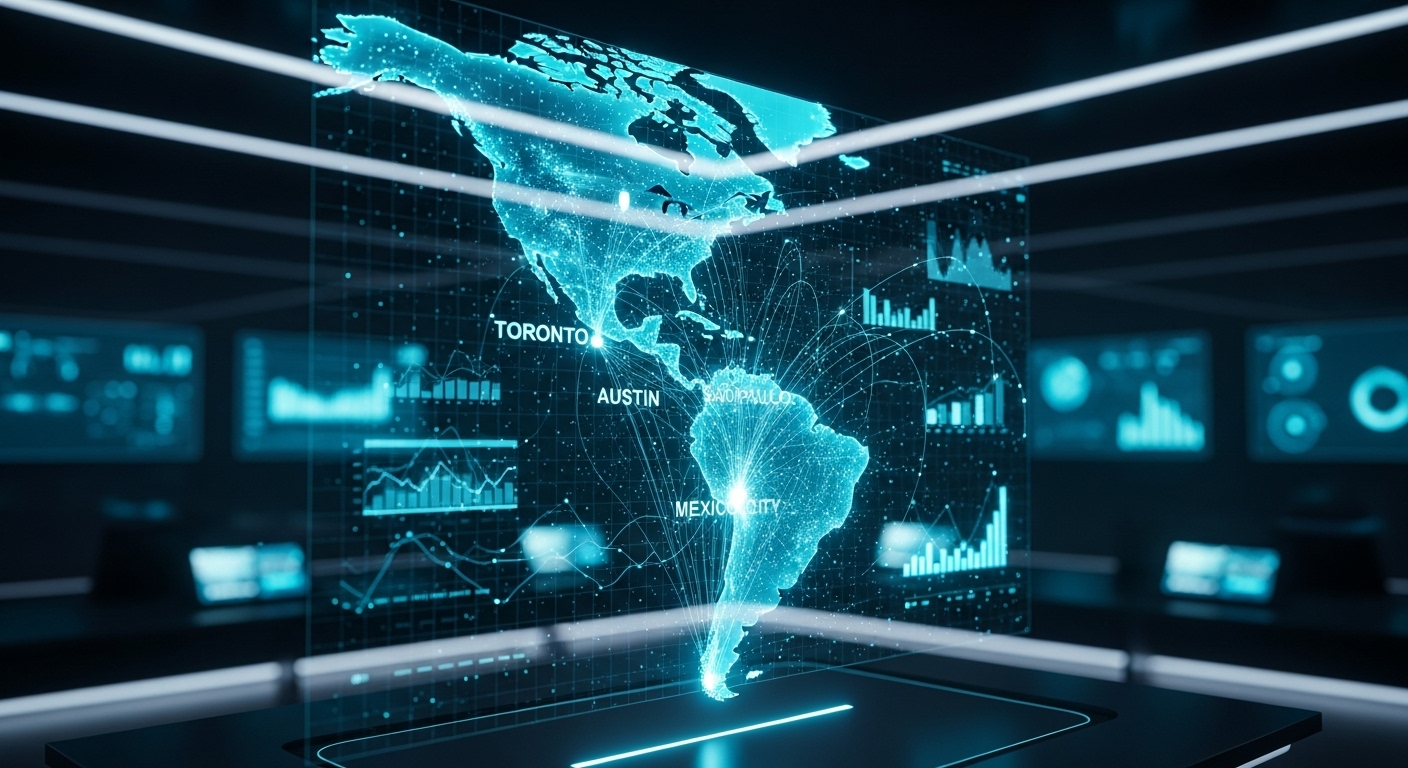The gravitational center of global business is undergoing a significant realignment, and nowhere is this more apparent than in the Asia-Pacific (APAC) region. Once defined by a handful of dominant metropolitan giants, the APAC landscape has evolved into a complex and interconnected network of specialized hubs. Propelled by rapid digitalization, strategic supply chain diversification, and a burgeoning middle class, a new set of power corridors has emerged. Recent analysis underscores this dynamism, with APAC poised as the fastest-growing global economic region in 2024, fueled by robust domestic demand in its major emerging economies. This transformation presents both unprecedented opportunities and new challenges for global enterprises. Understanding this polycentric reality is no longer just advantageous—it’s essential for crafting a resilient and successful expansion strategy. This guide will navigate the evolving roles of established titans, explore the ascent of tech-driven challenger cities, and illuminate the key trends shaping the future of business across these vibrant ecosystems.
The enduring titans: Singapore and Hong Kong’s strategic evolution
For decades, Singapore and Hong Kong have been the undisputed gateways to Asian markets. Their dominance was built on a foundation of pro-business policies, world-class infrastructure, and strategic geographic positioning. In 2024, they continue to hold top-tier status, but their roles are evolving in response to new regional dynamics. Singapore has solidified its position as a premier global financial center, ranking third worldwide, and has become the top destination for business travel in APAC. This is largely due to its political stability, robust legal framework, and aggressive investment in technology and innovation, making it a safe harbor for capital and a magnet for multinational corporations’ regional headquarters. It has successfully pivoted to become a hub for wealth management, fintech, and advanced manufacturing, ensuring its continued relevance. Hong Kong, meanwhile, leverages its unique position as the primary conduit to mainland China’s vast market. Despite recent geopolitical complexities, its low-tax regime and straightforward business formation processes remain highly attractive to foreign investors. While Singapore has diversified its appeal, Hong Kong has doubled down on its role as a super-connector for finance and trade between China and the rest of the world. Both cities are no longer just general-purpose hubs; they are now highly specialized, strategic assets for companies navigating the intricate APAC economic tapestry, forcing businesses to choose their base not on reputation alone, but on specific strategic needs.
The rise of the digital dragons: Seoul and Shenzhen’s tech supremacy
While traditional financial hubs adapt, a new breed of city is defining the future of innovation in Asia. At the forefront are Seoul and Shenzhen, two undisputed technology powerhouses. Seoul, the heart of South Korea’s economic miracle, has transitioned from a manufacturing giant to a global leader in deep tech, consumer electronics, and digital content. It boasts one of the world’s fastest and most extensive digital infrastructures, which has fostered a hyper-competitive environment for innovation in areas like 5G, IoT, and artificial intelligence. The city’s ecosystem is a potent mix of global conglomerates like Samsung and a vibrant, government-supported startup scene that is producing a steady stream of unicorns. Further south, Shenzhen has undergone one of the most remarkable transformations in modern history. Evolving from a manufacturing center to ‘China’s Silicon Valley,’ it is the epicenter of the country’s technological ambitions. Home to tech titans like Huawei and Tencent, Shenzhen’s ecosystem is characterized by an unparalleled integration of hardware and software innovation, rapid prototyping capabilities, and a culture of relentless experimentation. This environment has made it a global leader in telecommunications, drones, and fintech. Together, Seoul and Shenzhen represent the cutting edge of the digital economy, attracting talent and venture capital focused on creating the next generation of technology.
Southeast Asia’s challenger cities: The boom in Jakarta and Kuala Lumpur
Beyond the established giants, Southeast Asia is buzzing with a new energy, driven by a youthful demographic, rising digitalization, and a surge in foreign investment. Leading this charge are challenger cities like Jakarta and Kuala Lumpur, which are rapidly carving out their niches in the regional landscape. Jakarta, the sprawling capital of Indonesia, sits at the center of the region’s largest economy and one of its most dynamic digital markets. With a massive, young, and increasingly tech-savvy population, it has become a battleground for e-commerce, ride-hailing, and fintech innovation, producing several of the region’s most valuable startups. While infrastructure challenges remain, the sheer scale of the market opportunity makes Jakarta an essential hub for consumer-facing businesses. Just a short flight away, Kuala Lumpur offers a compelling alternative. Recognized as one of the fastest-growing cities in the region, it presents a stable and cost-effective base for businesses. Malaysia’s capital has strategically positioned itself as a hub for Islamic finance, a burgeoning tech startup ecosystem, and a regional center for multinational corporations’ shared services and operations. Its multicultural talent pool and strong government support for digital initiatives make it an increasingly attractive location for companies looking to serve the broader Southeast Asian market without the higher operational costs of Singapore.
India’s ascent: The Bangalore and Mumbai tech-finance nexus
As a continental-sized economy with immense demographic potential, India is an undeniable force in the new APAC order. This rise is best exemplified by the powerful tech-finance nexus formed by Bangalore and Mumbai. Bangalore, often dubbed the ‘Silicon Valley of India,’ stands as the nation’s largest and most important technology hub. It is home to a dense ecosystem of homegrown IT service giants, research and development centers for global tech companies, and the country’s most vibrant startup scene. The city’s deep talent pool of engineers and software developers has made it an indispensable part of the global technology supply chain, attracting billions in venture capital and fostering innovation in everything from enterprise software to space technology. Meanwhile, Mumbai serves as India’s undisputed financial capital. As home to the Reserve Bank of India and the country’s major stock exchanges, it is the nerve center of the nation’s economy. Mumbai’s robust financial services industry, combined with its status as a major port and commercial hub, makes it the primary gateway for foreign investment into the country. The synergy between Bangalore’s technological prowess and Mumbai’s financial muscle creates a powerful corridor that is driving India’s economic modernization and increasing integration into the global marketplace, making the country a key pillar of any comprehensive APAC strategy.
Navigating the new supply chain map: Diversification beyond China
Recent global disruptions have fundamentally altered the calculus of manufacturing and logistics, prompting a strategic shift known as the “China Plus One” strategy. Companies are actively diversifying their supply chains to build resilience and reduce dependency on a single market, a trend that is reshaping the economic geography of the APAC region. This strategic recalibration is creating significant opportunities for countries in Southeast Asia, which are emerging as key beneficiaries. Vietnam, with its proximity to China, favorable trade agreements, and disciplined workforce, has become a major hub for electronics manufacturing and assembly. Similarly, Malaysia is attracting investment in higher-value manufacturing, particularly in the semiconductor and electric vehicle (EV) sectors, leveraging its established industrial base. Thailand, with its strong automotive industry, is also pivoting to become a key player in the green manufacturing boom, focusing on EV parts and battery production. This diversification is not just about moving production lines; it’s about building new, interconnected logistics and manufacturing ecosystems. These emerging corridors are creating more complex but ultimately more resilient supply networks, forcing businesses to re-evaluate their sourcing and distribution strategies across the entire Asia-Pacific, from sourcing raw materials to reaching the end consumer.
The green imperative: How sustainability is shaping investment
A powerful new factor is influencing corporate strategy and investment flows across the Asia-Pacific: sustainability. The global push towards decarbonization and heightened awareness of Environmental, Social, and Governance (ESG) criteria are fundamentally reshaping how and where businesses choose to operate. Cities and nations that demonstrate a clear commitment to green growth are gaining a significant competitive advantage. Southeast Asia, in particular, is emerging as a potential powerhouse in the green industry. Driven by government initiatives and foreign investment, the region is rapidly developing its capacity for green manufacturing, with a strong focus on building out supply chains for batteries and electric vehicle components. Singapore, with its ‘Green Plan 2030,’ is positioning itself as a center for green finance and carbon trading, aiming to fund the region’s transition to a low-carbon economy. This trend extends beyond manufacturing. In the real estate sector, demand for certified green buildings is soaring as corporations seek to align their physical footprint with their sustainability goals. For businesses operating in APAC, a proactive ESG strategy is no longer a matter of corporate social responsibility but a core component of risk management and a key driver of long-term value creation and talent attraction.
Conclusion: Embracing a polycentric playbook for APAC growth
The era of viewing the Asia-Pacific through the lens of one or two dominant hubs is definitively over. The regional landscape has fractured into a dynamic, multi-polar network of interconnected economic corridors, each with its own distinct specialization and competitive advantage. The continued strategic evolution of established titans like Singapore and Hong Kong, the technological supremacy of digital dragons like Seoul and Shenzhen, and the vibrant rise of challenger cities across Southeast Asia and India paint a picture of a region rich with diverse opportunities. Key trends such as strategic supply chain diversification and the powerful imperative of sustainability are accelerating this fragmentation, forcing businesses to adopt a more nuanced and sophisticated approach. A successful APAC strategy in 2024 and beyond requires a ‘polycentric playbook’—one that diversifies presence, tailors operations to the unique strengths of multiple hubs, and builds resilience by tapping into this rich mosaic of ecosystems. Rather than placing a single bet, forward-thinking companies will build a portfolio of strategic locations, leveraging the tech prowess of one hub, the manufacturing capabilities of another, and the financial access of a third. This agility and strategic diversification will be the hallmark of those who not only survive but thrive in Asia-Pacific’s new center of gravity.





